Miraculous: Rescuing Cats
There’s this book, called Invisible Ink, by Brian McDonald, which I haven’t read, but I have heard summarised, and that right there is kind of a punchline in and of itself. The book has a bunch of stuff in it (including gender-coding storytelling tools, so I dunno, nevermind). In that book he outlines the idea that a lot of work is put into characterising and presenting certain characters in movies that fail at making those characters resonant because there’s something wrong or missing there.
The example given is the idea of rescuing a cat from a tree, something Superman does. Anyone unfamiliar with this scene idea or story beat probably doesn’t read this blog, but assuming otherwise, the idea is that a Superman story takes some time early on, before the story has ramped up and tension is high, to show Superman rescuing a cat stuck in a tree and return it to the people who are afraid. It’s a simple, small exchange, and one that most Superman movies have left out.
I think about this moment a lot, and here’s what’s had me thinking about it lately:


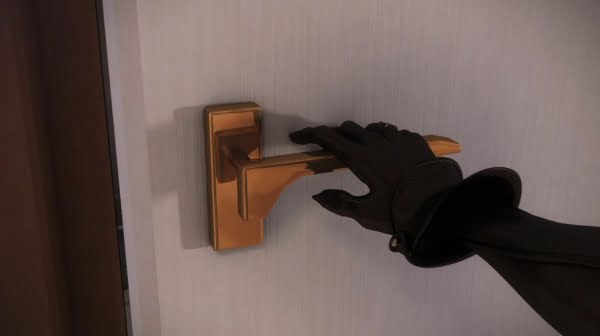
In Miraculous, there’s a moment where Marinette, as Ladybug, goes into a room to hide when she transforms. The door is ajar, and she left it that way, so it’s not like looking in the open door requires an action. If you were outside, and the light caught your eye, there’s a deniability to looking. Adrien, as Cat Noir, is outside and is in a position to look.
Now to be clear, there is no actual need for Adrien to be there. The story has been resolved and it’s an established point that Cat Noir often leaves the scene of an incident quickly so he, too, can transform back into Adrien and hide his identity. If the story wanted, he would not even be here.
Adrien approaches the door where Marinette is changing, and closes it.
The story doesn’t need to do this. There’s no unending question of why he was or wasn’t doing something in that room at the same time, no plot hole introduced by his presence or absence there. There’s nothing that needs explaining here. There’s no reason for this scene – except to show you something of who Adrien is, and what he’d do when confronted with an opportunity to learn something about Ladybug she’s not willingly letting him know.
Miraculous: Tales of Ladybug & Cat Noir, Pt 2. – Marinette
Here’s an idea, he says, missing PBS Idea Channel So Much Already, Miraculous is a superhero story of a different type because it is girly.
Don’t get at me on this one. We exist in a world with a culturally-accepted, defined and utilised gender binary, and all the Gender Is Fake, and Girly is Fake comments you can throw out there won’t change the fact that it’s part of how we do exist, and in that existing, there is definitely such a thing as girly stuff. And Miraculous Ladybug is very girly.
Girly is in this case a shorthand aesthetic for the things we already signpost as of or relating to girls. It’s in part an aesthetic, choices full of pinks, bright colours, pastels and broadly emotionally approachable signals. In a lot of media these are things that are also coded as being frivolous, or unimportant, or inherently comical. In Season 1 of Ladybug, Marinette is shown focusing on a fashion show, a school play, a babysitting job, and a literal popularity contest, which are all things I’m fairly sure Spider-Man has made fun of caring about.
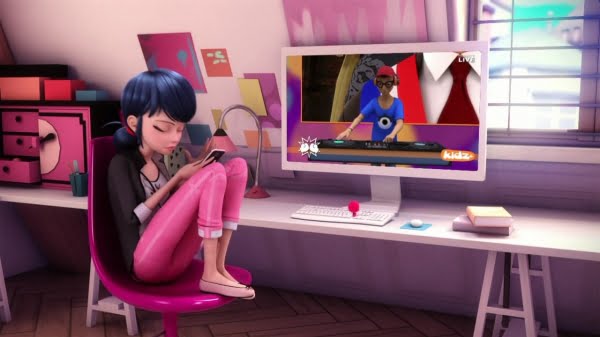
They are serious though, and Marinette takes them seriously. Taking these things seriously involves looking – seriously – at why we don’t, about what about them makes them Not Serious. Why is babysitting silly? Why is fashion silly? What makes them somehow less worthy a subject for a teen superhero to care about than, say, a chemistry experiment or a baseball game?
Sexism, yes, but think about the specifics. Why shouldn’t these things matter? Why not? When you start to remember these things are competitions or challenges with their own stakes, and the story takes them seriously, they’re just as rich a vein of fodder for the story as anything else. Since they’re inherently low-stakes problems in universe, though, these aren’t spaces you can have things like Out of Control Lab Accidents that make people into monsters, or introduce gunshot-level threats. The problems in Miraculous have to be superhero-worthy while having roots in these very mundane activities we entrust to children, without the framing of being Eventually Important versions of Important Things that we normally code as for boys.
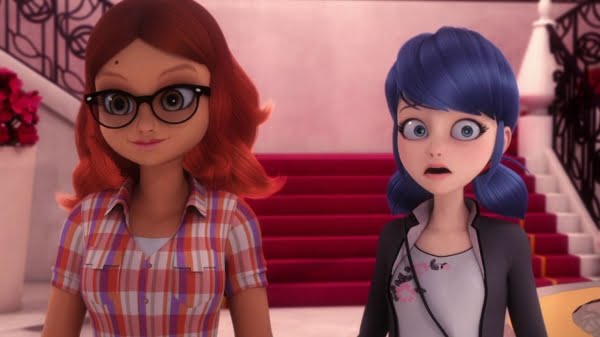
Know what definitely is a real thing that can feel worthy of a threat in those situations? Human emotions. Distress and sadness and anxiety and all these problems that we struggle with as adults, and maybe don’t even successfully handle. When you look at the problems that come up in the first season you have problems like being ignored by your parents when you were right, not being respected by your peers, being given conflicting information when you’re too young to understand it and being rejected and spurned by someone who you realise was much worse a person than you ever imagined. These emotional states are then, through the narrative tool of Hawkmoth (Papillon in the French, which makes me giggle), transformed into open, obvious metaphors for being stuck on that emotional problem.
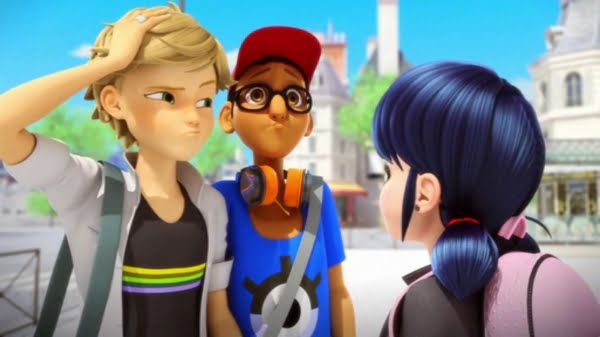
There’s also how it informs the tension of the story’s protagonists: Adrien and Marinette are both characters who have Got It for each other, but this tension is not arbitary. Adrien is a good looking boy – both in universe, and also in his design. The story doesn’t present a Very Average looking boy as being handsome, and there are boys around him who are also less pretty, showing the story is actually making him exceptional. The boys are presented as needing to be visually interesting, and they are, rather than being more or less templates of one another.
When the time comes, however, that Marinette takes action – as Ladybug, mind you, since this is clearly part of her contention as a superhero – none of the negative traits we associate with Girly are a problem. Marinette is not shown being paralysed by emotions, or wrapped up in indecision. There is a confidence to her actions that typically would be coded as Not-Girly – but this is story that is so happily and wholly Girly it serves more to ask the question Why Would This Be Out of Type? Ladybug’s behaviour is unlike Marinette’s, but that’s because Marinette isn’t confident – not because she’s a girl.
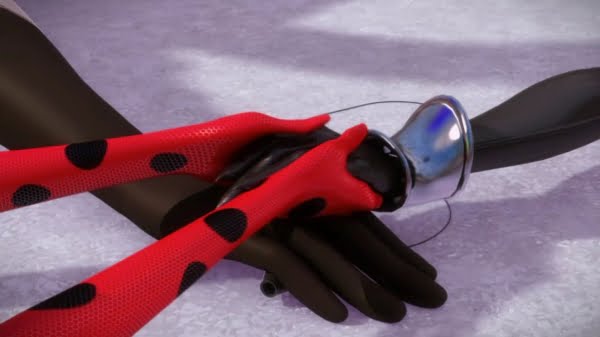
Let’s take this one to a point of demonstration. In episode 6, the villain, Mr Pigeon, has a whistle that lets him control flocks of pigeons. Oh and spoilers I guess. Point is, in this episode, there’s a moment where three people lunge for it and their hands hit it in a stack – Cat Noir’s hand, then Mr Pigeon’s hand, then Marinette’s hand. And without thinking about it, without a moment of ‘ahah!’ or looking to the characters’ faces or whatever, bam, she just smashes downwards and breaks the object at the bottom of the stack.
Marinette’s problem-solving, the power of getting one Lucky solution in the right time and place, is really excellent as it shows her being thoughtful and confident, quick-thinking and decisive. The story will present her with Oven Mitts and say fix the problem, hero, and she will come up with the solution in some of the most wonderfully silly point-and-click adventure moments in media.
Miraculous is a girly superhero show. It’s about a girl, it’s about the things a girl cares about, and it wants to talk to girls in the storytelling tools of girls. And it’s absolutely great.
Miraculous: Tales of Ladybug & Cat Noir, Pt 1. – The Gush
Holy crap oh my goodness this show is so good people. I’d normally like, try and structure this whole thing somewhat and there will be time for that but for now, I’m just going to gush about some things in this series I really hecking like.
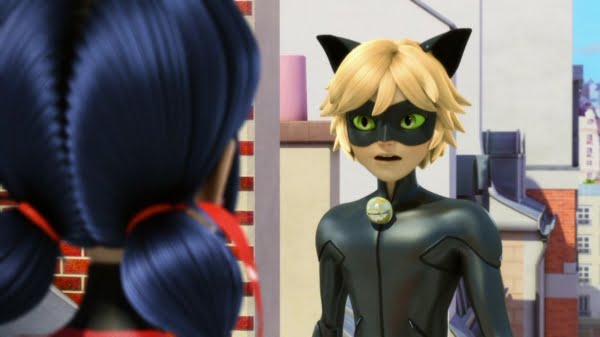 Here’s a thing! Ladybugs are a symbol of luck. I didn’t know that going in, and for a little while I was confused as to why they chose the two characters they had – the black cat and the ladybug and I just didn’t quite get why. Then when you find that ladybugs are good luck, the imagery and meme of the black cat as bad luck and – and that’s good use of imagery and concept space! That gives you space to look at the two characters, gives you a nice, simple place to start from! It anchors characters to existing media spaces and it gives them distinct, interesting visual theming!
Here’s a thing! Ladybugs are a symbol of luck. I didn’t know that going in, and for a little while I was confused as to why they chose the two characters they had – the black cat and the ladybug and I just didn’t quite get why. Then when you find that ladybugs are good luck, the imagery and meme of the black cat as bad luck and – and that’s good use of imagery and concept space! That gives you space to look at the two characters, gives you a nice, simple place to start from! It anchors characters to existing media spaces and it gives them distinct, interesting visual theming!
That means that when they work together in the same space, despite the fact the two characters are basically the same style of fighter, and move more or less the same way you’re never left confused as to which one you’re seeing in a moment of action because one is bright honking red and the other is black, but neither of their costumes seem to be of a different type to the other!
Also if luck is the thing that defines the two characters it means your solutions to problems can be extremely outlandish or one-time! A character who relies on luck as a theme means that if she only gets a thing to work once that’s enough, unlike characters like Batman who rely on being heavily prepared! This means things can be both more thematically interesting and varied while also showing off the character’s quick wits!
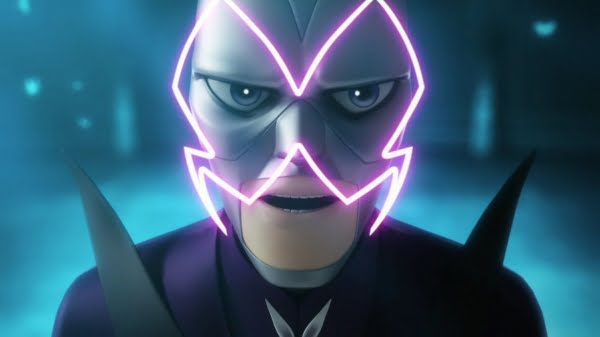
Oh and the enemies! All the enemies are empowered by the real villain when they demonstrate a moment of emotional distress that the can’t handle or process properly – which is to say, this is a series where the big conflict point is processing your emotions properly. Nobody’s sadness or anger is shown as being illegitimate, and nobody’s emotions are used to excuse or justify the things they do – because the villain is using magical powers to take control of them, there’s no need to do that.
This is great because it means you can treat emotional duress as important and worth respecting, you can show characters repeatedly resisting it or engaging with it to show their growth as people, and you can even show how some people’s processing can be inhibited or expressed. Then you get the added dimension that both adults and children fall prey to this power set, for a variety of different reasons – some are meanspirited and cruel, but many of them are frustrated or misunderstood! This means there are stories about handling emotions as a child and as an adult and at no point does the story just say ‘well suck it up.’
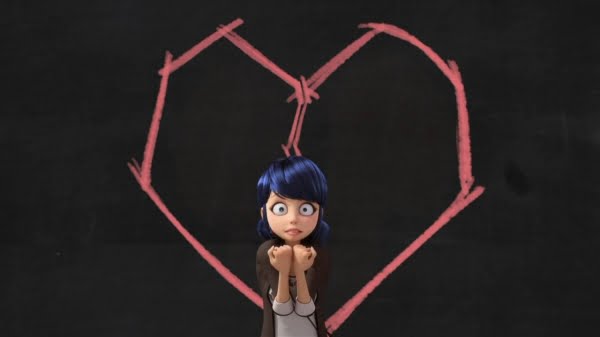
So you have these characters who are directly expressing rudimentary metaphors about emotional processing in a way that involves actual cool looking fights with some dynamic, interestingly chosen characters who fight and think and are cool at things, and then the aftermath is about watching the protagonists grow in light of the things they now understand about the emotional process their friends went through, and there’s no guilt or rancor about the times they were turned. There is a legitimate recognition that someone else preyed on their emotional state and ‘made’ them into villains, and that those moments of distress or anger or rage don’t represent who they truly are!
This is romantic storytelling at its most primal, not romance-as-interaction, where people are smoochin’ and doin’ smooches and that’s all the stories are moving about, but romance where human emotion are the driving forces of the universe, where the story is always moving in ways to make human emotion run against other human emotion! Coincidence transpires – and it’s fine, because the story isn’t about the realism of events – and then that brings people’s emotions to bear against one another!
Things don’t need explaining, they need understanding.
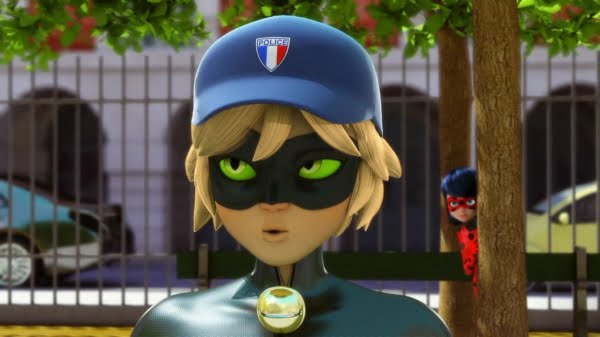
Plus it’s funny. It’s funny in a way that doesn’t treat its viewers – who are kids – like idiots. It doesn’t pitch its comedy low, and that means it projects a sense of respect for its viewers. They show things only a few moments, and don’t need to over-explain it – basically it’s like an exact, functional opposite to Suicide Squad, which overstates everything and is also grim and dark and grungy for no good reason.
I have more, but I kind of want to save more in-depth conversation about it until I’ve rewatched some of it, but also to do a bit more of an in-depth read on Marinette as a character and what choosing her has done for this series as a superhero story.
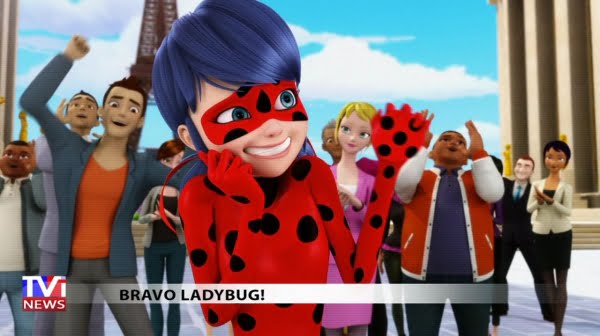
God it’s a good time to like superheroes.